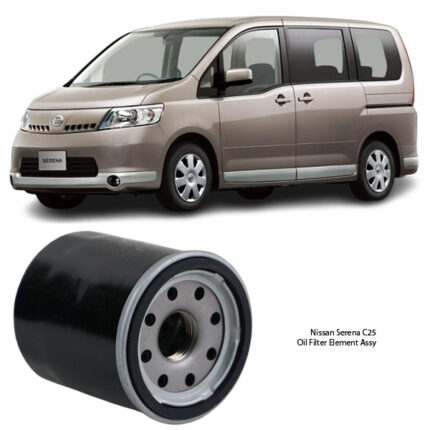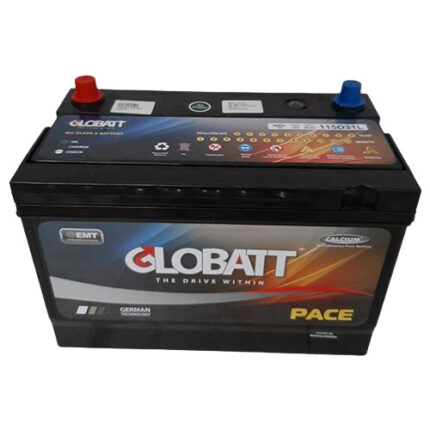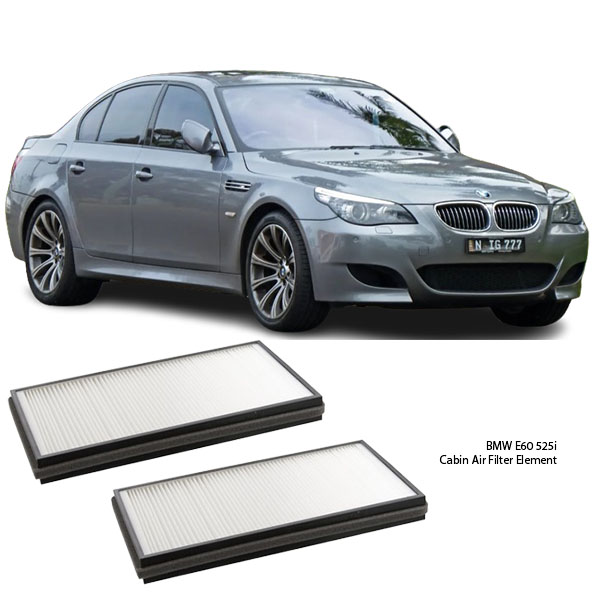-14%
Get BMW E60 525i Cabin Air Filter Assy 64319171858 in Kenya
A vehicle’s cabin air filter assembly is a crucial component of the HVAC (Heating, Ventilation, and Air Conditioning) system. It ensures clean air enters the vehicle’s cabin by filtering out dust, pollen, pollutants, and other airborne contaminants. A well-functioning cabin air filter enhances passenger comfort, prevents respiratory issues, and helps maintain the efficiency of the vehicle’s climate control system.
In this guide, we will cover everything you need to know about cabin air filter assemblies, including their functions, types, benefits, signs of failure, and maintenance tips.
What is a Cabin Air Filter Assembly?
The cabin air filter assembly is a complete unit that houses the cabin air filter and provides the necessary structure for its proper installation. It is designed to trap contaminants before they enter the vehicle’s interior through the ventilation system.
This assembly consists of:
- Cabin Air Filter – The main filtration media that removes pollutants from incoming air.
- Filter Housing – A plastic or metal casing that holds the filter in place.
- Air Duct Connection Points – Openings that allow air to pass through the filter before entering the cabin.
The cabin air filter is typically located behind the glove compartment, under the dashboard, or near the engine firewall, depending on the vehicle make and model.
How Does a Cabin Air Filter Work?
When you turn on the air conditioning or heating system, outside air is drawn into the vehicle. Before this air reaches the interior, it passes through the cabin air filter. The filter captures contaminants and allows only clean air to flow through, ensuring a healthier and more comfortable driving experience.
Filtration Process
- Air Intake – The HVAC system pulls in air from outside the vehicle.
- Filtration – The air passes through the cabin air filter, where dust, pollen, and other pollutants are trapped.
- Clean Air Circulation – The purified air is directed into the cabin through vents.
Types of Cabin Air Filters
There are different types of cabin air filters, each offering varying levels of protection and filtration capabilities.
1. Particulate Cabin Air Filters
- Designed to capture solid contaminants such as dust, pollen, and dirt.
- Ideal for general filtration but does not remove odors or gases.
2. Activated Carbon Cabin Air Filters
- Contains a layer of activated carbon that absorbs odors, smoke, and harmful gases.
- More effective in filtering out air pollution and improving air quality.
3. HEPA Cabin Air Filters
- High-Efficiency Particulate Air (HEPA) filters can trap microscopic particles, including bacteria and allergens.
- Recommended for individuals with allergies or respiratory conditions.
4. Electrostatic Cabin Air Filters
- Uses an electrostatic charge to attract and trap airborne contaminants.
- Offers enhanced filtration efficiency compared to standard particulate filters.
Benefits of a Cabin Air Filter Assembly
Using a high-quality cabin air filter assembly provides numerous advantages, making it a vital component of vehicle maintenance.
1. Improved Air Quality
- Removes harmful pollutants such as dust, pollen, mold spores, and bacteria.
- Ensures fresh, breathable air inside the vehicle.
2. Reduces Allergies and Respiratory Issues
- Helps protect passengers from allergens and airborne irritants.
- Beneficial for individuals with asthma or respiratory sensitivities.
3. Protects the HVAC System
- Prevents dirt and debris from clogging the air conditioning system.
- Enhances the efficiency and lifespan of the HVAC components.
4. Eliminates Unpleasant Odors
- Activated carbon filters absorb smoke, exhaust fumes, and other bad odors.
- Provides a fresh-smelling interior environment.
5. Enhances Driving Comfort
- Maintains consistent airflow for better climate control.
- Reduces windshield fogging by ensuring proper air circulation.
Signs of a Failing Cabin Air Filter
A clogged or worn-out cabin air filter can negatively impact vehicle performance and passenger comfort. Watch out for the following warning signs:
1. Reduced Airflow from Vents
- Weak airflow when using the air conditioner or heater.
- Can cause discomfort, especially in extreme weather conditions.
2. Unpleasant Odors Inside the Cabin
- Musty or moldy smell coming from the vents.
- Can indicate bacteria buildup on the filter.
3. Increased Allergy Symptoms
- More sneezing, coughing, or irritation while driving.
- Suggests the filter is no longer effectively trapping allergens.
4. Fogged-Up Windows
- Poor ventilation can cause condensation to build up inside the car.
- A clogged filter restricts airflow, making it harder to defog windows.
5. Noisy or Strained HVAC System
- A dirty filter forces the fan to work harder, leading to excess noise.
- May put unnecessary stress on the system, increasing wear and tear.
Cabin Air Filter Maintenance Tips
Proper maintenance of the cabin air filter assembly ensures optimal performance and prolongs the life of the HVAC system. Here’s how you can take care of it:
1. Check and Replace the Filter Regularly
- Most manufacturers recommend replacing the cabin air filter every 12,000 to 15,000 miles (19,000 to 24,000 km) or at least once a year.
- If you drive in dusty areas, replacement may be needed more frequently.
2. Inspect the Housing for Debris
- Check for leaves, dirt, or foreign objects that may clog the air intake.
- Clean the housing when replacing the filter.
3. Use the Right Filter Type
- Always choose a compatible cabin air filter that fits your vehicle’s specifications.
- Consider upgrading to a carbon or HEPA filter for better air quality.
4. Keep Air Vents Clean
- Regularly clean the dashboard and air vents to prevent dust buildup.
- This reduces strain on the cabin air filter.
5. Monitor HVAC Performance
- If you notice weak airflow or persistent odors, inspect the cabin air filter.
- A timely replacement prevents further HVAC issues.
How to Replace a Cabin Air Filter Assembly
Replacing the cabin air filter is a simple process that most vehicle owners can do themselves. Here’s a step-by-step guide:
1. Locate the Cabin Air Filter Housing
- Check the owner’s manual to find the exact location.
- Common places include behind the glove box, under the dashboard, or near the firewall.
2. Remove the Old Filter
- Open the filter housing and carefully slide out the old filter.
- Take note of the airflow direction marked on the filter.
3. Clean the Housing
- Use a vacuum or cloth to remove dust and debris.
- Ensure the area is free from any obstructions.
4. Install the New Filter
- Insert the new filter in the correct orientation.
- Close the housing securely.
5. Test the System
- Turn on the HVAC system and check for proper airflow.
- Ensure there are no unusual sounds or odors.
Conclusion
The cabin air filter assembly plays a critical role in ensuring clean and fresh air inside the vehicle. Regular maintenance and timely replacement improve air quality, passenger comfort, and HVAC efficiency. By understanding its function and benefits, you can ensure a healthier driving experience while protecting your car’s climate control system.
Keeping your cabin air filter in top condition not only enhances air circulation but also prevents costly repairs. If you’re unsure when to replace yours, check your vehicle manual or consult an auto expert for guidance.
Follow us on Facebook for more parts.




Reviews
Clear filtersThere are no reviews yet.